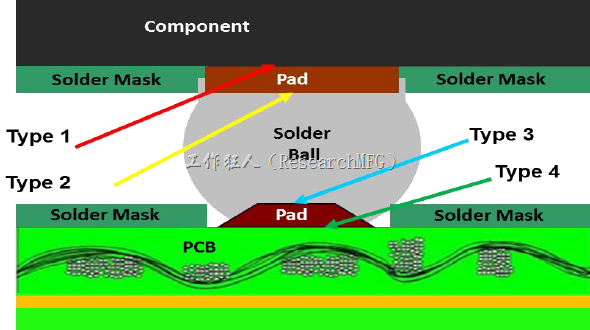
Moisture Sensitive Devices (MSD) refer to electronic components that are sensitive to moisture.
Moisture, also known as humidity, refers to the amount of water vapor in the atmosphere that the components are exposed to. The environment is typically the factory floor or production line, as well as any environment the components are exposed to after being removed from vacuum-sealed packaging.
Please note that liquid or solid water cannot be counted as part of humidity! In fact, the human body can feel humidity. In a high humidity environment, you can feel that sticky sensation, like when it’s about to rain but hasn’t started yet, and your whole body feels damp.
So how does humidity affect electronic components? This is because water vapor molecules are smaller than liquid or solid water molecules, and they can potentially penetrate the gaps of moisture-sensitive components. If these components with humidity are taken directly to a SMT reflow oven for heating, imagine what could happen. You may have boiled water before or seen a gas stove boiling water on TV. After the water boils, have you seen the steam push the pot cover upwards? That’s the effect of steam heating. Steam rapidly expands when heated and can produce a tremendous amount of force. Steam locomotives in the past were powered by steam, so you can see how powerful steam can be.
Let’s talk about electronic components. If there is water vapor inside an electronic component and it is rapidly heated to a temperature above the boiling point of water, which can reach up to 250˚C in lead-free reflow, and the water vapor is unable to escape from the component’s gaps in time, the worst-case scenario is that it will explode like a bomb from the inside of the electronic component. This could result in minor damage to the internal structure of the component or even layer separation and cracking in severe cases.
Since water vapor can cause such serious consequences to electronic components, it is necessary to control their moisture content. This is why IPC standards have introduced standards for controlling Moisture Sensitive Devices (MSD) and defining Moisture Sensitive Levels (MSL).
Does this mean that all electronic components that need to go through reflow with rapidly heating should be concerned about the explosion caused by water vapor?
The answer to this question is not necessarily yes. As mentioned earlier, the structure of electronic components must have gaps that allow water vapor to enter in order for there to be a problem, but these gaps cannot be too large. If the gaps are large enough to allow expanded water vapor to escape, no damage will occur. Hence, only components with small gaps will be affected.
Which electronic components have small gaps? It’s the packaged components, so the first ones to be concerned about are IC components. This is because almost all ICs are packaged by encapsulating the chip with top and bottom molds, or by stacking layers. The gaps are formed at the junction of the top and bottom molds or between the layers. Therefore, generally, when we refer to moisture-sensitive components, we are referring to these IC components. BGA components may be even worse, as the chips must be mounted on a carrier PCB, which poses issues with the coefficient of thermal expansion.
In addition, most IC components use gold or copper wires to conduct signals from the chip. These small wires are even more vulnerable to damage from the pushing force generated by moisture. As a former engineer in an IC packaging factory, Workingbear know that most IC packages have voids due to the limitations of the molding process. If moisture is not controlled properly, it can easily penetrate these holes. When the moisture expands rapidly, it can cause problems.
Currently, the industry’s definition of “moisture-sensitive components” is limited to the issues of delamination and popcorn in packaged components. There are also two main IPC standards used to regulate moisture-sensitive components and moisture sensitivity levels.
-
The IPC/JEDEC J-STD-020: Moisture/Reflow Sensitivity Classification for Non-hermetic Solid State Surface Mount Devices is a standard used by component manufacturers to determine and classify their components according to their moisture sensitivity level. The document defines the testing humidity and exposure time for different moisture sensitivity levels, and then verifies whether they meet the requirements by going through a reflow soldering process.
-
The IPC/JEDEC J-STD-033: Handling, Packing, Shipping and Use of Moisture/Reflow Sensitive Surface Mount Devices is a standard that defines how moisture-sensitive components should be used, transported, stored, and packaged to avoid moisture damage and ensure their reliability after reflow soldering. It also defines how to use baking conditions to restore the dryness of moisture-sensitive components.
Now, you should understand what is “moisture-sensitive components.” However, you may still wonder why many components outside of ICs are also required to undergo vacuum drying and humidity control. This is because moisture can cause not only layering problems due to volume expansion from heating, but also accelerate the oxidation of surface finished on component terminals, leading to subsequent soldering problems. In addition, some plastic resins used in components, such as PA (nylon), have moisture absorption issues that can cause component embrittlement, deformation, and discoloration after passing through high temperatures.
Because there are no unified humidity control conditions for these electronic components, a single standard cannot fully regulate all components. Therefore, the moisture prevention conditions must be defined according to the individual needs of each component. In most electronic components, except for IC components and printed circuit boards (PCBs), there may be a risk of cracking and de-lamination, so each case should be evaluated individually.
Another issue that needs to be addressed is that “baking” can be used to remove moisture from moisture-sensitive components, but baking cannot restore the solderability of already oxidized component terminals. For more information on this topic, please refer to other related articles: Common problems with baking moisture-sensitive components.
Related Articles:









Leave a Reply